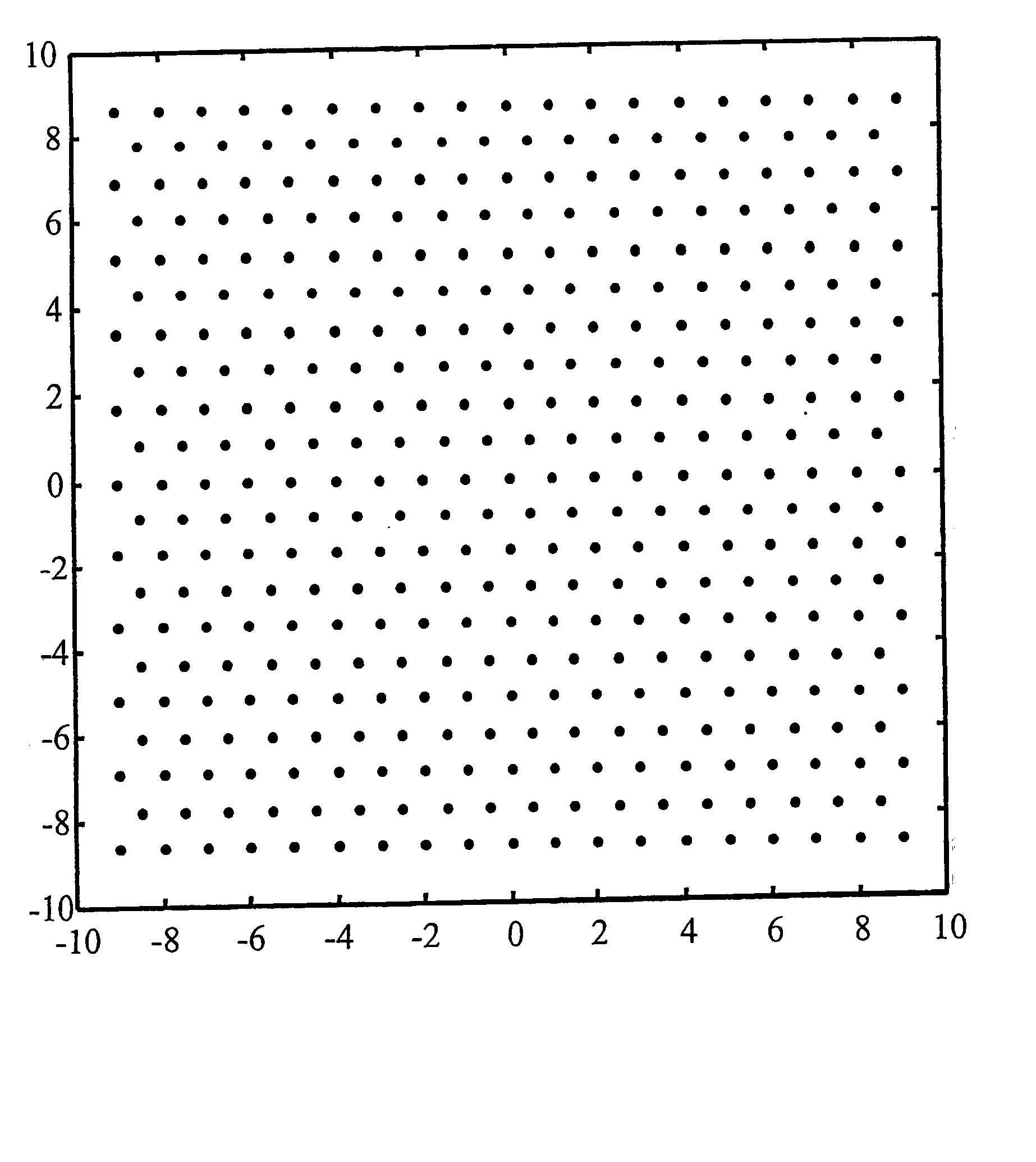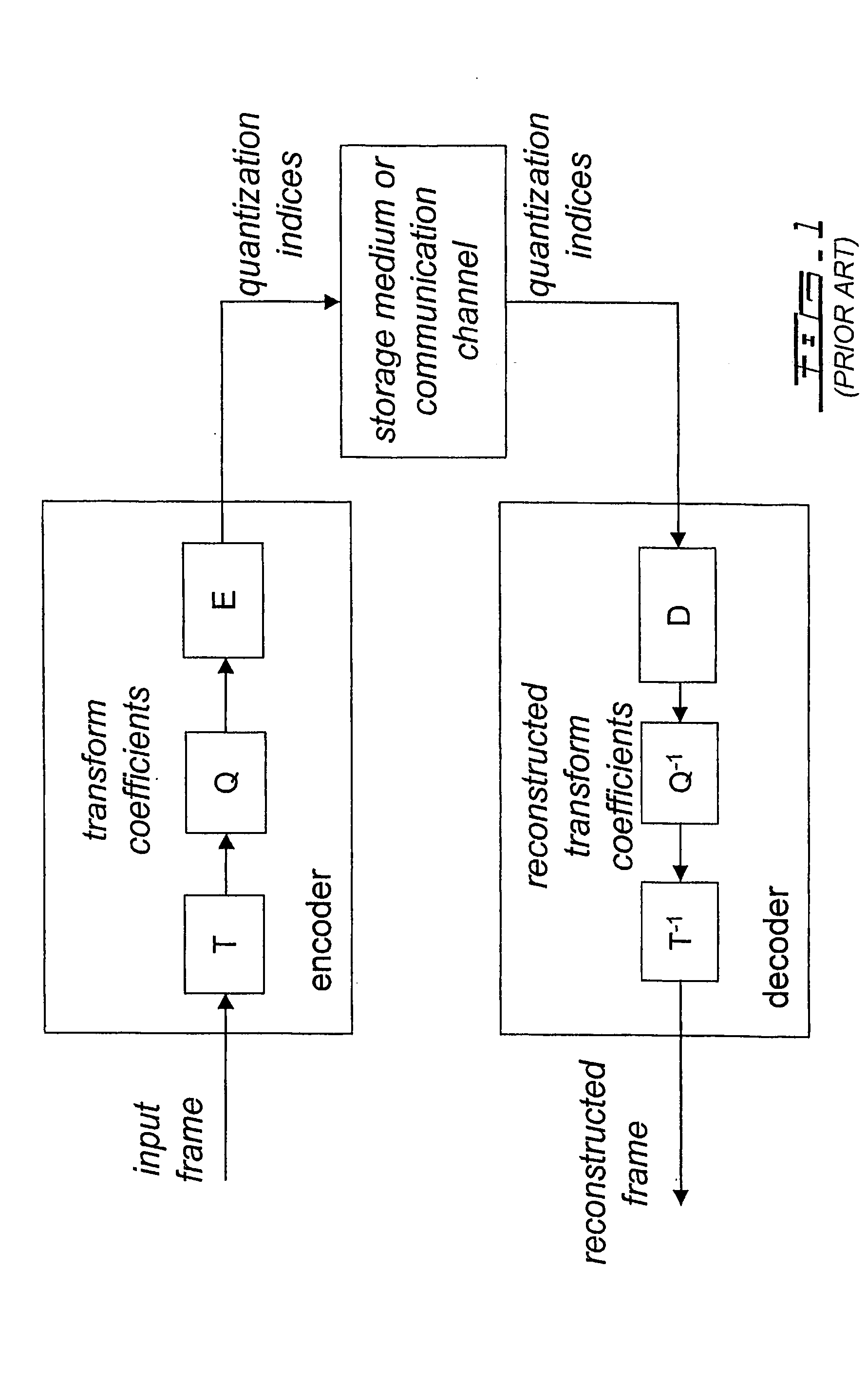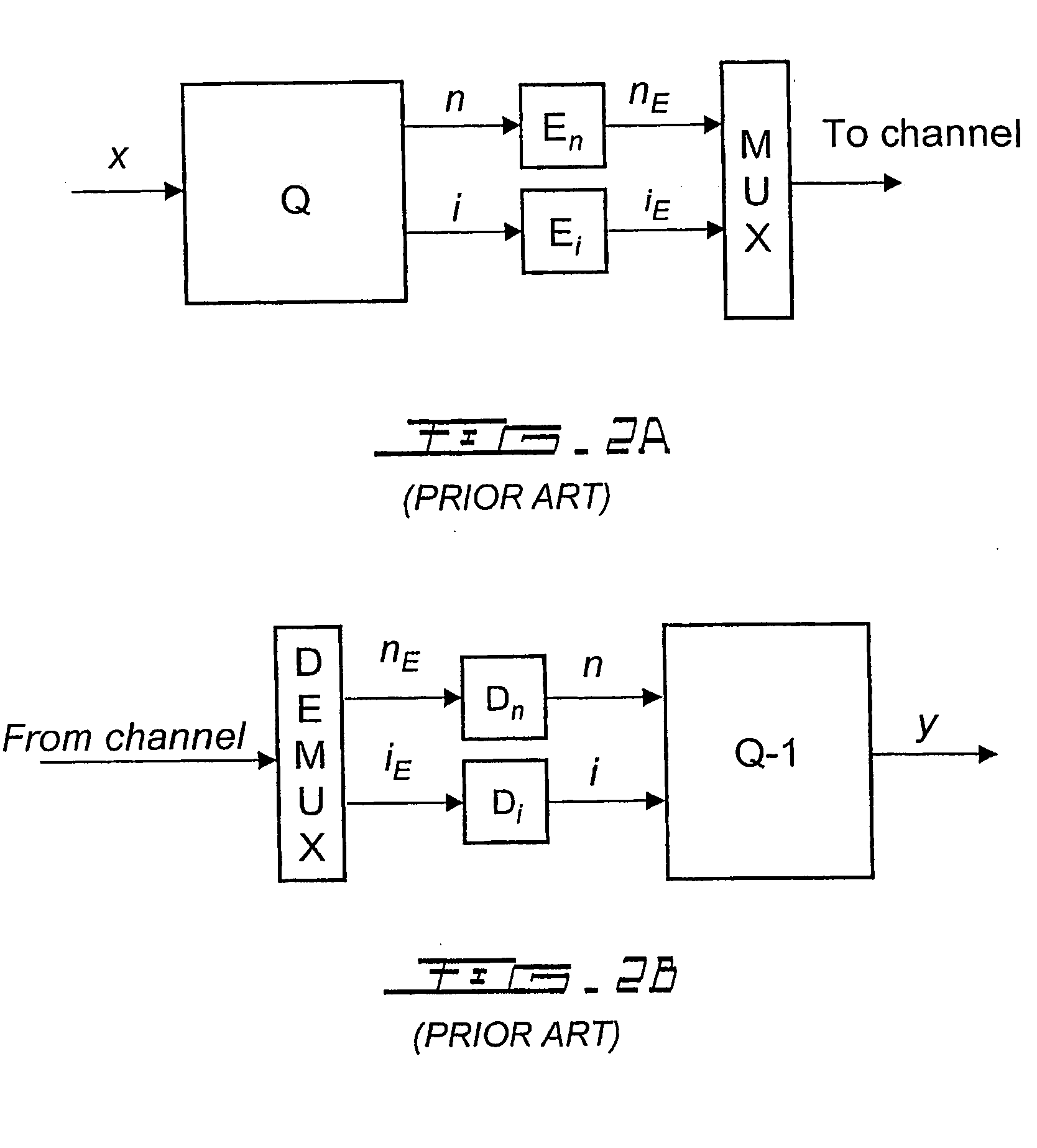Method and system for multi-rate lattice vector quantization of a signal
- Summary
- Abstract
- Description
- Claims
- Application Information
AI Technical Summary
Benefits of technology
Problems solved by technology
Method used
Image
Examples
third embodiment
[0137] Then, in step 104, it is determined if y is an entry of the base codebook C. If y is in C (step 106), the number of bits used to quantize x is thus NR, which corresponds to the number of bits used by the base codebook. The codebook number n is set to 0 and the encoding method terminates. If y is not in the base codebook C, y is considered an outlier and the method 100 proceeds with step 108, which, with steps 110-118, form a Voronoi extension method according to the first aspect of the present invention.
[0138] As discussed hereinbelow, since y is an outlier, more bits are required to quantize x with y compared with the case where y is part of the base codebook. The extension procedure, which is iterative, generates an extended codebook, eventually including a lattice vector y, which can then be indexed properly.
[0139] Step 108 is an initialization step, where the extension order r is set to 1 and the scaling factor m to 2r=2.
[0140] The Voronoi index k is then computed of th...
second embodiment
[0178] In the multi-rate lattice vector encoding and decoding methods, the Voronoi extension was iterated by incrementing the extension order r until y is reached. This may yield an unbounded complexity. In order to constrain the worst-case complexity, it has been found advantageous to use a maximum of two iterations for the Voronoi extension.
[0179] In the initialization step of the extension method, the extension order rand the extension scaling factor m are set to some initial values given the lattice vector y=[y1 . . . y8] so as to minimize the number of iterations over r. The iteration counter iter is set to zero.
[0180] The pre-selection of rand m is implemented as follows. First, the floating-point value σ=(y12+ . . . +y82) / 32 is computed, r=1 is set and m=2r=2. Then while σ>11, iterate σ, r, and m by updating σ:=σ / 4, r:=r+1 and m:=2m. The rationale of this procedure is justified by the following two observations: [0181] When moving from the rth order extension to the (r+1 )th...
PUM
 Login to View More
Login to View More Abstract
Description
Claims
Application Information
 Login to View More
Login to View More - R&D
- Intellectual Property
- Life Sciences
- Materials
- Tech Scout
- Unparalleled Data Quality
- Higher Quality Content
- 60% Fewer Hallucinations
Browse by: Latest US Patents, China's latest patents, Technical Efficacy Thesaurus, Application Domain, Technology Topic, Popular Technical Reports.
© 2025 PatSnap. All rights reserved.Legal|Privacy policy|Modern Slavery Act Transparency Statement|Sitemap|About US| Contact US: help@patsnap.com



